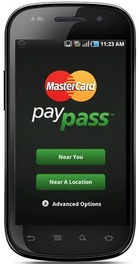 Yesterday, we looked at several financial institutions using Black Friday/Cyber Monday to promote banking products (see note 1). But it’s also a great time to focus on community outreach and charitable pursuits, a tack taken by Bank of America (note 2).
Yesterday, we looked at several financial institutions using Black Friday/Cyber Monday to promote banking products (see note 1). But it’s also a great time to focus on community outreach and charitable pursuits, a tack taken by Bank of America (note 2).
The bank is supporting Feeding America, which leverages a small  amount of cash into a large number of meals by tapping bulk food donors. It says that every dollar donated translates into 8 meals. Bank of America’s providing $1 million outright plus an additional $500,000 pledged in matching funds. The bank will match customer/employee donations 3 to 1 (note 3). All in all, that’s $1.75 mil to U.S. food banks which will cover nearly 15 million meals.
amount of cash into a large number of meals by tapping bulk food donors. It says that every dollar donated translates into 8 meals. Bank of America’s providing $1 million outright plus an additional $500,000 pledged in matching funds. The bank will match customer/employee donations 3 to 1 (note 3). All in all, that’s $1.75 mil to U.S. food banks which will cover nearly 15 million meals.
Bottom line: Overall, its a great effort. The bank is feeding the hungry, and more importantly, educating thousands of potential donors about the magic multiplier of the efficient food bank supply chains. It was a good choice to close out the holiday weekend.
—————————————–
Bank of America’s homepage promoted Feeding America on Cyber Monday (28 Nov 2011).

Landing page (link)

Cobranded donation page at FeedingAmerica.org (link)
Note: The bank’s program has generated 2,299,113 free meals as of 29 Nov at 10 PM Pacific. Twenty hours later, the number had risen by 173,000, implying $22,000 in donations.

———————————————
Notes:
1. The Financial Brand has additional info on ING Direct Canada’s Cyber Monday special.
2. Of course, a little positive PR couldn’t hurt the bank either.
3. Looking at the math, I’m not sure how many customers will really see a 3-to-1 match, which means $250,000 in customer donations are eligible for a bank match. The bank has in the neighborhood of 25 million customers. If just 1% of its customers each donate a single dollar, the cap will be hit. But still, $500,000 = 4 million more meals, so I certainly can’t complain.













 3.8 million members to earn cash back or rewards points when shopping with their Navy FCU credit card (see screenshot below).
3.8 million members to earn cash back or rewards points when shopping with their Navy FCU credit card (see screenshot below).  To learn more about Cartera Commerce, watch its
To learn more about Cartera Commerce, watch its 



